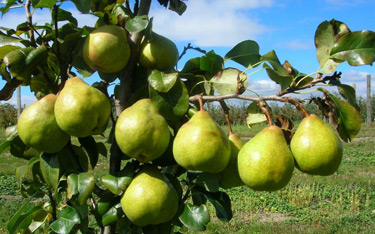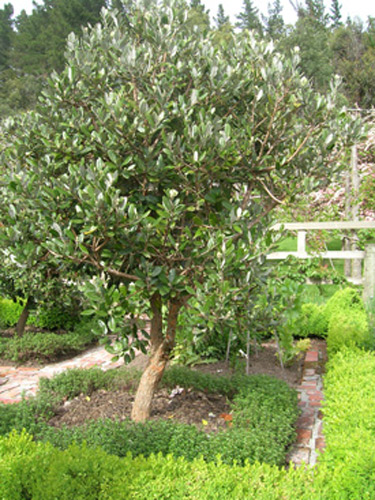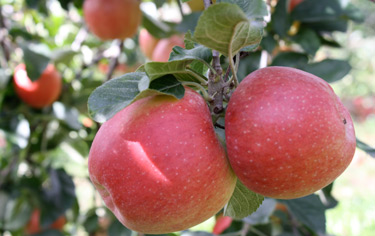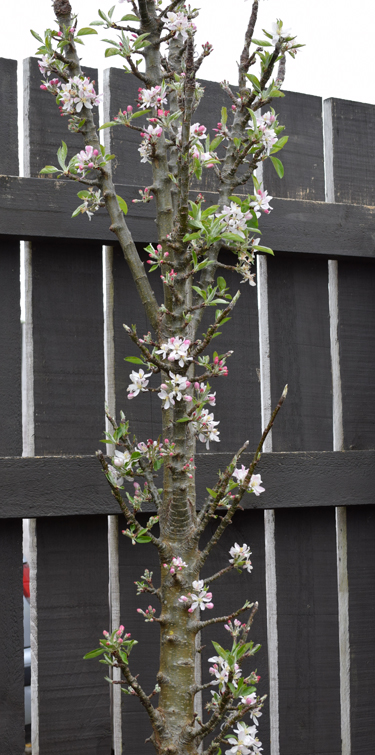The fruitful garden
A well planned and maintained fruit garden can be a fantastic asset, saving money spent on groceries while providing convenient, safe and healthy seasonal food.
Winter is an ideal planting time for fruit trees. Garden centres get their main supplies of fruit trees in June and July. It’s a great time to buy while there is the best range to choose from. Also, the soil is moist and trees are dormant, so planting is less stressful for them.
Ten ways to get the best from your fruit garden
| 1 | Replace old and under-performing trees. When the disease status of a tree means its fruit is no longer of a high standard and the yield is low, it’s time to say goodbye and make space for something new. |
| 2 | Prioritise favourites. In the interests of growing fruit the family most enjoys eating, it’s also worth sacrificing trees that produce something you don’t especially enjoy. Involve the whole family in prioritising which fruit trees should be at the top of your shopping list. Go to www.waimeanurseries.co.nz for inspiration. |
| 3 | Looks matter. When space is limited its important to have trees that are both attractive and productive. A temporary reduction in yield while waiting for a new fruit tree to grow is a small price to pay when replacing a tree that’s become an eyesore. |
| 4 | Grow the best varieties for your climate. Regional factors are important. For example, southern gardens need the most cold tolerant citrus varieties. For peaches and plums, a level of winter chilling is needed, but some varieties will set fruit with less chill than others. Check with your own local garden centre staff for the best varieties to grow in your climate. |
| 5 | Soil matters. Soil type comes into play when choosing tree varieties and their rootstocks. We can’t greatly change the soil we are dealt, but much can be done with composting, irrigation and feeding or by planting new trees in raised beds (or large containers) for better drainage. |
| 6 | Measure up. Pay close attention to the information on plant labels. What is the shape, size and spread of this tree? Measure up the space available for a new tree and make sure you’re not in an overcrowding situation. More sunlight on trees means more fruit. |
| 7 | Prune with purpose. Maintaining your fruit trees with the right kind of pruning helps keep them free of diseases and allows light into the tree, which ultimately means tastier fruit and more of it. Pruning also helps keep trees to a manageable size with fruit that’s in easy reach.Thinning to lighten a crop load makes for larger fruit at harvest. |
| 8 | Pay attention to pollination. Check if your chosen variety needs a pollinator variety for peak productivity. If there is no room for it in your garden, maybe you can collaborate with neighbours or choose a self fertile variety. Grow flowers that will help attract pollinators to your fruit trees. |
| 9 | Space savers. Espalliering is both highly decorative and an efficient way of growing more fruit less space, training trees flat along a sunny wall or fence. Space saving dwarf fruit trees also produce a very high volume of fruit that belies their compact size. If you need a hedge for privacy, make it a ‘hedge with benefits’. Feijoas are perfect for this. And if there is room for only one lawn tree, consider a grafted tree to give you different varieties with different harvest times. Or create a ‘family tree’ whereby three or four pip or stonefruit varieties can be planted in one large hole. Go to www.waimeanurseries.co.nz to find out more. |
| 10 | Spread the harvest season. Plant trees that fruit at different times of year to enjoy an extended picking season and avoid big gluts. For example, start with berries and stonefruit for summer, plant two or three different apple varieties (or a multi-grafted tree) for fruit from early to late autumn; include pears and feijoas for autumn following through to a few different citrus varieties for winter and spring. |
Recommended
- Deliciously sweet dwarf Pear Garden Belle® is the first truly dwarf pear variety in New Zealand, growing to just 3m tall.
- Dwarf Apple Blush BabeTM grows just two metres tall but its crisp red fruit is full-sized and plentiful.
- Dwarf Apple Autento has great disease resistance which means clean fruit can be produced with little or no spraying.
- Producing loads of juicy green eating apples and pretty spring blossom, Ballerina® Apple Bolero has a unique columnar shape just 30cm wide, perfect for small gardens. Ballerina® Apple varieties are the world's most compact apple trees.
- Self fertile and black spot resistant Apple AdoreTM is very easy to grow and is perfect for organic gardens.
- Dwarf Peach Rose Chiffon is a picture in early spring with beautiful double rose red blossom. Juicy white fleshed fruit follows in summer.
- Feijoa Kaiteri is very early ripening with huge sweet fruit.


Feature article from Waimea Nurseries. For further information and more inspirational planting ideas, visit www.waimeanurseries.co.nz
31-May-2019

Pear Garden Belle

Feijoa tree

Apple Adore

Ballerina apple in spring

